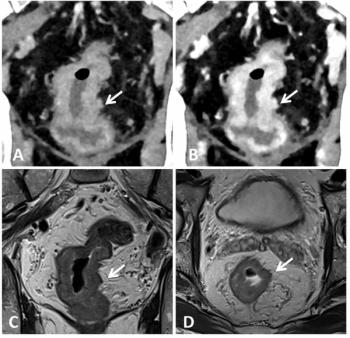
Report from ECR: Delayed-enhancement MR saves senior marathon runners from lethal lap
Marathon runners 50 years or older may face a higher than expected risk of sudden cardiovascular accidents. MR imaging with late gadolinium enhancement may help identify these athletes in time to keep them from potentially deadly episodes, according to German researchers reporting at the 2008 European Congress of Radiology in Vienna.
Marathon runners 50 years or older may face a higher than expected risk of sudden cardiovascular accidents. MR imaging with late gadolinium enhancement may help identify these athletes in time to keep them from potentially deadly episodes, according to German researchers reporting at the 2008 European Congress of Radiology in Vienna.
Regular physical exercise reduces cardiovascular mortality. Paradoxically, however, studies confirm that vigorous physical exertion also boosts the risk of sudden cardiac death. The risk increases with age, but no reliable indicators can help pinpoint which athletes face the worst odds. MRI of the myocardium with late gadolinium enhancement could offer some athletes in specific demographics a reliable assessment of the likelihood of myocardial disease, said principal investigator Dr. Frank Breuckmann from the West German Heart Center at the University of Essen.
Breuckmann and colleagues assessed a total of 108 asymptomatic healthy male subjects aged 50 to 72 with a minimum of five completed marathon races during a consecutive three-year period. They also enrolled a control group matched for age and risk factors and excluded subjects with known cardiovascular disease or diabetes mellitus. All subjects in the study underwent gadolinium-enhanced MRI, and those with late enhancement underwent additional adenosine stress perfusion imaging.
The investigators found an unexpectedly high number of these accomplished nonprofessional athletes had late enhancement MR signs suggesting myocardial disease, including ischemia, myocardial fibrosis, and scarring. The researchers presented their findings Sunday in Vienna.
Twelve of 102 individuals who completed the study showed late gadolinium enhancement. Five subjects had signs of ischemic myocardial scarring, and adenosine stress perfusion confirmed the abnormalities in four of them. Seven individuals exhibited midmyocardial enhancement suggestive of nonischemic origin. After a follow-up period of almost two years, those runners with myocardial late enhancement had worse event-free survival than those without (p<0.0001).
Late gadolinium enhancement may have important prognostic implications for older athletes, Breuckmann said. In the specific case of marathon runners, the technique may help identify those at risk of cardiac events.
For more online information, visit Diagnostic Imaging's
Newsletter
Stay at the forefront of radiology with the Diagnostic Imaging newsletter, delivering the latest news, clinical insights, and imaging advancements for today’s radiologists.



























